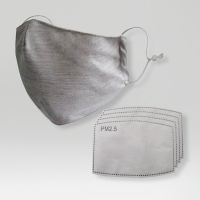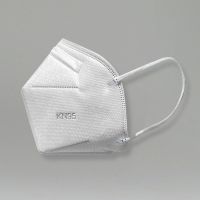This is a demo store. No orders will be fulfilled.
Call Our Herbalists
Herbal Consultations
Disposable PM 2.5 Activated Carbon Fiber (ACF) Filters (10 pack)
- Protect your lungs against pollution, gases, odor, pollen, haze, dust, smoke or other PM 2.5 (fine particulate matter in the air with diameter of 2.5 microns or less)
- Four-Layer Filtration: made of activated carbon fiber (ACF), melt-blown cloth and 2 layers of non-woven cloth
- Wide applications: general protection from air borne particles, driving, gardening, construction, outdoor exercise, painting, travel, wild fire, etc.
- Reasonable Filters size: 11cm x 8cm/ 4.33" x 3.1" and will fit most masks
- Rapid delivery: We guarantee that your PM2.5 Activated Carbon Filter will be delivered within 3-7 business days at the latest.
Product Description
PM 2.5 Activated Carbon Fiber Filters protect against pollution, gases, odor, pollen, haze, dust, smoke and other PM 2.5 (fine particulate matter in the air with diameter of 2.5 microns or less) (about 3% of the diameter of a strand of hair). Respiratory droplets are at least 5 microns in diameter.
This PM2.5 filter is made of 4 layers of high technology filtration. The middle layer is the activated carbon. Activated carbon was originally invented by the UK Ministry of Defense. It was then extensively developed and made into a product for use in chemical, biological and nuclear warfare protection, of the type used by armed forces around the world. Activated Carbon Fiber (ACF) is the 3rd generation of activated carbon filtration technology with superior filtration efficiency. It is considered the break-through environmental protection material of the 21st century. It has been widely used in air and water filtration. Its absorption capacity is 10 to 50 times better than active carbon power or granules. Its absorption speed is 100-1000 times faster than the active carbon power or granules as well. Only a few countries can produce this material. ACF has extremely large specific surface area (around 17,000 ft2per gram) with micro-pores around 1-4 nanometer in diameter. That is about 1/100,000th of the human hair. All of these mean superior filtration efficiency.
Next to the ACF layer is a layer of melt-blown cloth for extra protection and filtration. And these two layers are enclosed by the outermost layers of non-woven cloth.
The pack contains 10 ACF filters that can fit most masks. Use these filters with masks/face coverings for extra protection.
However, please note that our masks/filters are not approved by FDA and therefore cannot be used in a medical setting.
Only reuse the filters if necessary and only reuse them a few times.
The filters can be reused through one of the following ACF regeneration processes that forces the absorbed particles to break free from ACF.
- Sunbathe the filter under strong sunlight.
- Boil the filter in water for 10-15 minutes. Rinse under running water for a few minutes to remove the particles. Dry and reuse. Avoid twisting or rubbing the filter with hands because that can damage the fiber structure and integrity. Use blow dryer on high heat to dry and to break free the absorbed particles.
Stop using the filters if the fibers become loose or worn.
According to New York State Department of Health:
“PM 2.5 refers to tiny particles or droplets in the air that are two and one half microns or less in width. Particles in the PM 2.5 size range are able to travel deeply into the respiratory tract, reaching the lungs. Exposure to fine particles can cause short-term health effects such as eye, nose, throat and lung irritation, coughing, sneezing, runny nose and shortness of breath. Exposure to fine particles can also affect lung function and worsen medical conditions such as asthma and heart disease. Scientific studies have linked increases in daily PM 2.5 exposure with increased respiratory and cardiovascular hospital admissions, emergency department visits and deaths. Studies also suggest that long term exposure to fine particulate matter may be associated with increased rates of chronic bronchitis, reduced lung function and increased mortality from lung cancer and heart disease. People with breathing and heart problems, children and the elderly may be particularly sensitive to PM 2.5.”
---https://www.health.ny.gov/environmental/indoors/air/pmq_a.htm
PM 2.5 comes primarily from automobile exhaust, off-road vehicle (e.g. construction equipment, snowmobile) exhaust and other operations that involve the burning of fuels such as wood, heating oil, coal and natural sources such as forest and grass fires. Indoor sources of PM 2.5 are tobacco smoke, cooking (e.g., frying, sautéing, and broiling), burning candles or oil lamps, and operating fireplaces and fuel-burning space heaters (e.g., kerosene heaters).







